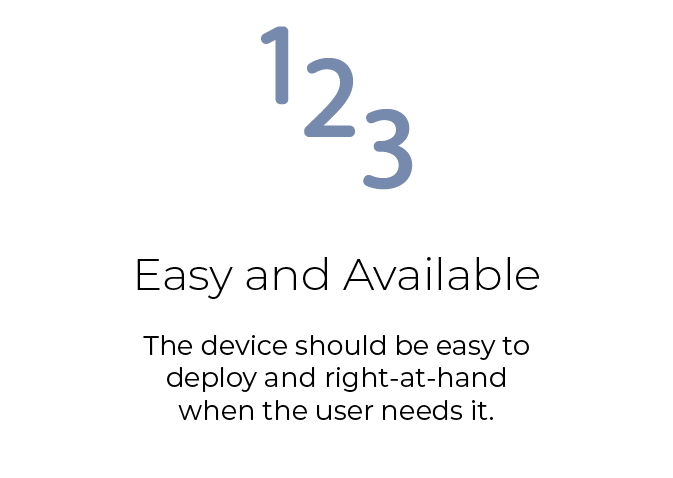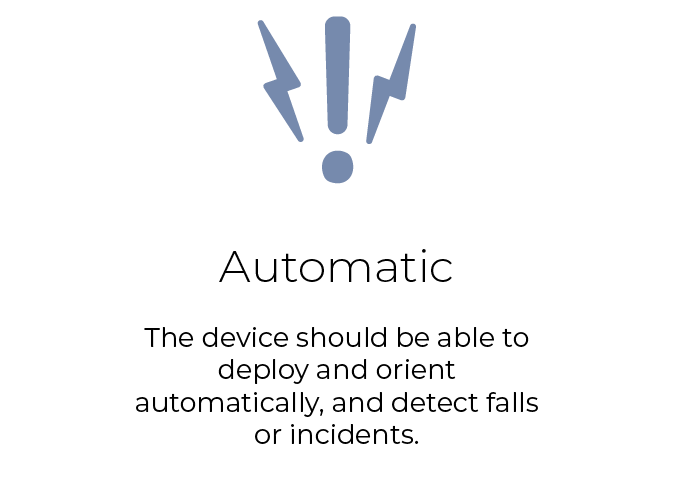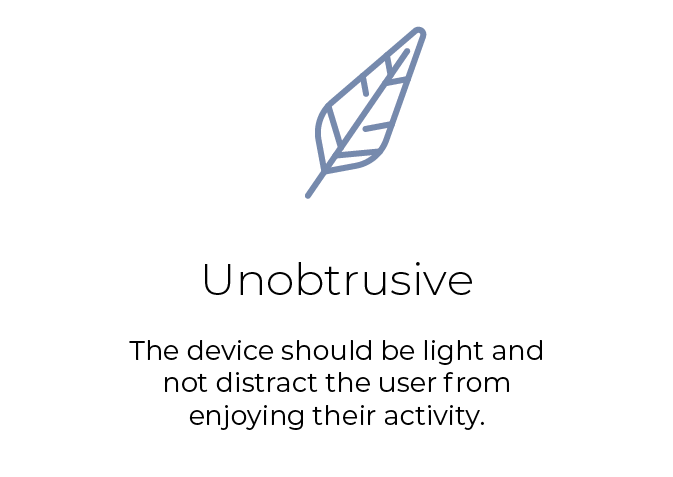IBEX is an emergency locator beacon for alpine activities that is always to hand, easy to use, and can deploy automatically.
Context
Emergency locator beacons already exist for outdoor activities. They use GPS, satellite and radio communication to broadcast a users location if activated.
However, existing solutions have a number of design flaws; they are bulky, tend to be stowed deep in backpacks, have poor user interfaces, and require the user to manually activate and orientate them for proper signal transmission. This project aims to prototype solutions to these problems.
Experience and Task Goals
Representative users were interviewed and existing products were analysed to extract key goals to solve for a redesigned locator beacon. This helped give a stronger context of use and set the key goals to be solved through the project.
Existing locator beacons are poorly designed for emergencies:
- Multiple steps needed to activate
- Poor 'blinking light' User Interface
- Antenna requires manual activation and orientation.
Not the experience user's need in an emergency.



Form Factor Exploration
Early sketches explored the best placement of a redesigned locator beacon. With some input from role-play with basic prototypes, the shoulder strap of the backpack emerged as the best location, being reachable with both hands and allows for a display for glanceable info for the user.

Early stage prototyping focused on simple foam models to get a feel of scale and placement.

The model above shows the “pullto- activate” form factor, with the locator beacon fixed high on the shoulder.
Based on initial prototypes, this form factor was taken forward:
Control panel with pull to activate handle, containing a battery, display and buttons
Locator Beacon Unit on the shoulder, with GPS receiver, long life battery and automatic antenna.
Prototyping
Control Panel Development
To help the UI take shape and build the interaction flow, a C code based interaction model was developed. This allowed me to work out the logic of operations and learn more about developing low power user interfaces.
Additionally, A simple 3D printed mockup Enables the quick testing of control placing and size.
Antenna Development
The antenna needs to trigger and orientate automatically, so I put together a number of prototypes to develop the key functionality. By breaking the different needs into smaller sub prototypes, I could develop key functionality quickly before bringing them together in a final model.
Servo + Accelerometer = Auto Orientation
DC Motor + Tape Measure = Compact Antenna
Proof of Concept: Automatic Antenna
The proof of concept prototype took the tape measure concept to the next level. By incorporating an H-bridge, a DC motor, a servo and accelerometer I invented an angle-responsive antenna prototype.
If the user falls, the accelerometer can detect the angle they are lying at, the motor un-spools the antenna from the housing, and the servo adjusts its angle to ensure it stays vertical. This would allow activation even if the user was knocked unconscious.
User testing revealed the limitation of shoulder placement, the design would be redesigned to allow the antenna unit to be located anywhere on the backpack.
Testing the prototype in a real world context helped show that my initial idea of placement was wrong. The design should allow users to attach the unit wherever they need on their pack, not just on the shoulder.